-
PDF
- Split View
-
Views
-
Cite
Cite
Content Snapshots, Annals of Botany, Volume 127, Issue 1, January 2021, Pages i–iii, https://doi.org/10.1093/aob/mcaa200
Close - Share Icon Share
Propagule pressure and the establishment of polyploid populations (Viewpoint)
Annals of Botany 127: 1–5, 2021
doi: 10.1093/aob/mcaa187
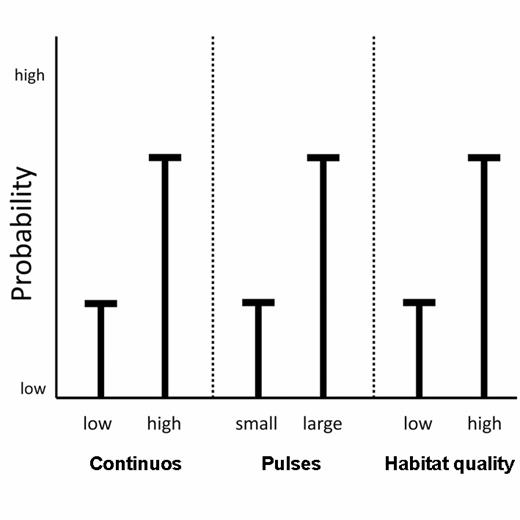
Factors including polyploid competitive ability and reproductive success have been considered in the establishment of polyploids in populations of diploid plants. Levin argues that a key factor controlling the initial establishment of polyploid populations is the number of polyploid seeds produced by diploids. This contention is based on the long-standing observation that seed number (propagule pressure) is a prime factor in the establishment of newly founded populations of invasive species. The probability of polyploid establishment is dependent (in part) on the number of polyploid seeds produced by diploids in a given year and by the number of years of polyploid seed production by diploids.
Author: Donald A. Levin
Unravelling the intergenomic recombination in ABB allotriploid bananas
Annals of Botany 127: 7–20, 2021
doi: 10.1093/aob/mcaa032
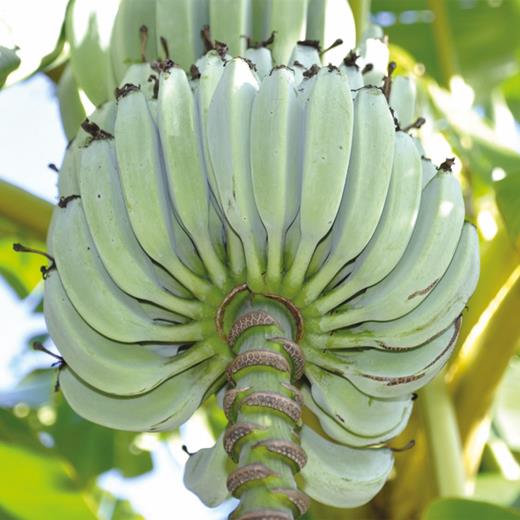
Cooking bananas, which play a central role in food security, are comprised of triploid cultivars from hybridization between Musa acuminata (A genome) and M. balbisiana (B genome). Their diversity at chromosome scale has not been fully characterized and questions on taxonomic classification, historically inferred from botanical descriptors, remain. Using RAD-seq derived SNP markers, Cenci et al. investigate the ABB genome group with 36 representatives of the main subgroups. These markers display regions deviating from the expected A1:B2 ratio with evidence of homoeologous exchanges that delineate genetic patterns. Comparisons among these reveal the multiple and independent origins of ABB cultivars with at least nine founding events. The overall analyses suggest genetic fluxes between M. balbisiana and M. acuminata (or derived cultivars) and possible backcrosses between A-B hybrids and M. balbisiana.
Authors: Alberto Cenci, Julie Sardos, Yann Hueber, Guillaume Martin, Catherine Breton, Nicolas Roux, Rony Swennen, Sebastien Christian Carpentier, and Mathieu Rouard
For a commentary on this article, see this issue pp. iv–v.
Recent hybrid speciation of the narrow endemic Pulmonaria helvetica
Annals of Botany 127: 21–31, 2021
doi: 10.1093/aob/mcaa145
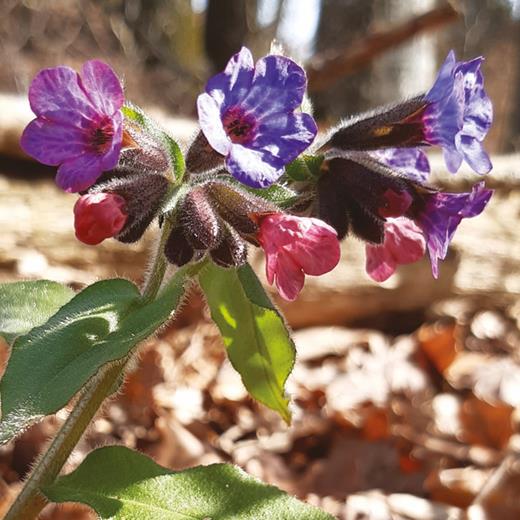
Investigating a narrow endemic species (Pulmonaria helvetica, Boraginaceae) that is restricted to small areas of Switzerland that were heavily glaciated during the ice ages, Grünig et al. use sequence data to demonstrate its genetic isolation from neighbouring species and determine its origin out of a balanced admixture between P. officinalis and P. mollis s.l. Genetic and ecological evidence are consistent with a scenario of hybrid speciation without significant ecological differences, suggesting that hybridization supported the origin of new species under climate changes.
Authors: Sandra Grünig, Markus Fischer, and Christian Parisod
Repetitive element composition of sex chromosomes in Rumex acetosa
Annals of Botany 127: 33–47, 2021
doi: 10.1093/aob/mcaa160
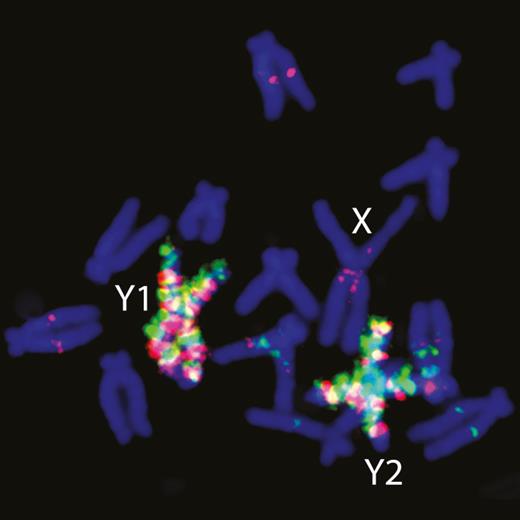
In contrast to animals, dioecious species with sex chromosomes are rare in the plant kingdom. Rumex acetosa (Polygonaceae) is a dioecious plant with XY1Y2 chromosomal sex determination. Although the evolution of sex chromosomes has been the subject of numerous studies, a global view of sex chromosome structure is still missing in this species. Jesionek et al. flow-sort and sequence sex chromosomes and autosomes in R. acetosa, and demonstrate that the R. acetosa genome was formed by the expansion of repetitive elements with a specific pattern of distribution in sex chromosomes. Different transposon families proliferated preferentially in the paternal and maternal lineages.
Authors: Wojciech Jesionek, Markéta Bodláková, Zdeněk Kubát, Radim Čegan, Boris Vyskot, Jan Vrána, Jan Šafář, Janka Puterova, and Roman Hobza
Hybridization patterns differ between Eucalyptus subgenera
Annals of Botany 127: 49–62, 2021
doi: 10.1093/aob/mcaa164
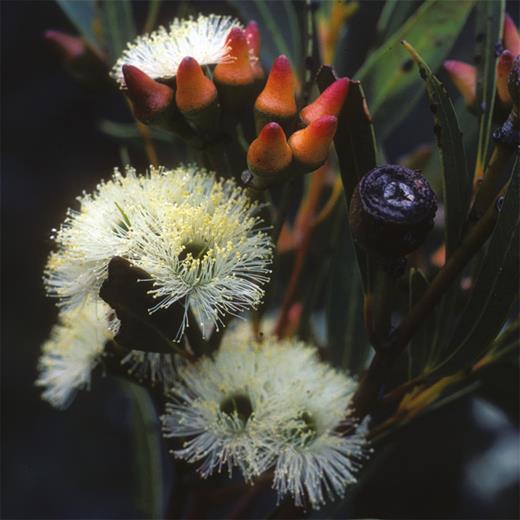
Eucalypts are well known for weak reproductive barriers and extensive hybridization within subgenera, but there is little knowledge of whether patterns of hybridization differ among subgenera. Robins et al. use genome-wide SNP data to compare hybrid structure in the two largest subgenera, Eucalyptus and Symphyomyrtus (Myrtaceae). While hybridization occurs in both subgenera, it is much more extensive in subg. Symphyomyrtus, the taxa of which are relatively recently evolved and typically occur on younger landscapes, compared to the older taxa of subg. Eucalyptus on ancient landscapes. This disparity reflects the greater time period and environmental stability for divergence and reproductive barriers to evolve in subg. Eucalyptus.
Image Credit: S.D. Hopper
Authors: T.P. Robins, R.M. Binks, M. Byrne, and S.D. Hopper
Evolution of ribosomal DNA in Camellia
Annals of Botany 127: 63–73, 2021
doi: 10.1093/aob/mcaa169
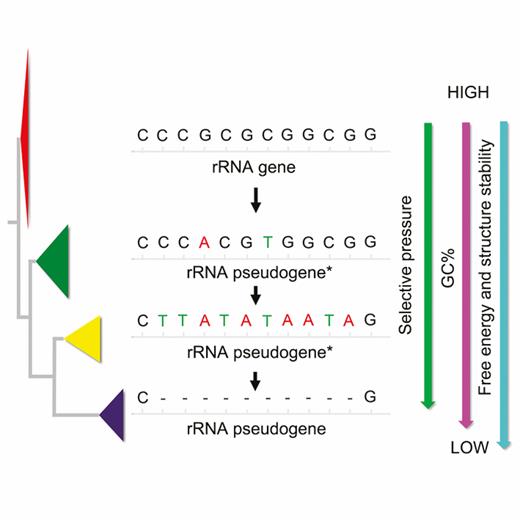
Ribosomal DNA (rDNA) within most plant species is uniform, however by using a meta-genomic strategy, Zhang et al. find rDNA polymorphisms are universal in Camellia (Theaceae). rDNA in Camellia is subjected to a mixture of concerted birth-and-death evolution. Functional rDNA is still the major component of the family and is relatively conserved. Sequence variations mainly come from pseudogenes, some of which may have potential function. When, however, they are released from selection constraints, they evolve towards decreasing structural stability and are finally eliminated from the genome.
Authors: Min Zhang, Yi-Wei Tang, Ying Xu, Takahiro Yonezawa, Yang Shao, Yu-Guo Wang, Zhi-Ping Song, Ji Yang, and Wen-Ju Zhang
Subspecies divergence and pronounced phylogenetic incongruence in Magnolia
Annals of Botany 127: 75–90, 2021
doi: 10.1093/aob/mcaa174

The East-Asia-endemic shrub Magnolia sieboldii (Magnoliaceae) presents interesting biogeographic patterns in which the range of the subsp. sieboldii is located between the disjunct distributions of subsp. japonica. Kikuchi and Osone use chloroplast and nuclear genetic markers to detect deep, but pronouncedly incongruent, east-west genetic divergences across the species, in which only the nuclear low-copy genes delineated the subspecies. They demonstrate that ancient subspecies divergence and secondary hybridization and introgression are likely to have occurred, driven by major paleogeographic and paleoclimatic events since the Pliocene in East Asia.
Authors: Satoshi Kikuchi and Yoko Osone
Reshuffling and recombination of Cassandra retrotransposons in sugar beet
Annals of Botany 127: 91–109, 2021
doi: 10.1093/aob/mcaa176
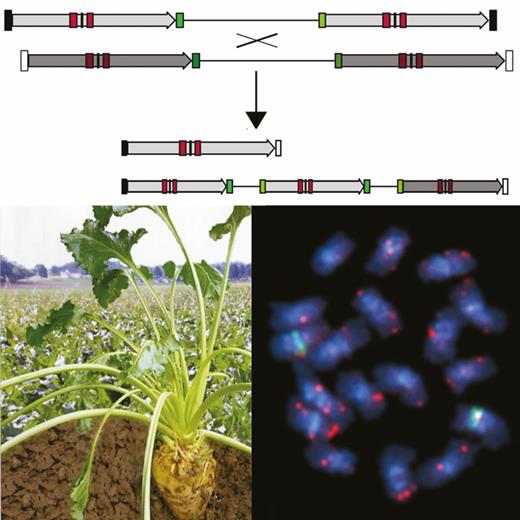
Cassandra retrotransposons are a unique family of mobile DNA elements. They are small in size and harbour unique promoter elements allowing them steady replication and propagation in the genome; however, they lack any coding capacity for the necessary proteins to do so. Maiwald et al. identify Cassandra elements in sugar beet (Beta vulgaris) and Amaranthaceae relatives revealing a unique landscape of Cassandra subfamilies. They find evidence for massive homology-mediated Cassandra restructuring. This suggests that reshuffling and recombination strongly affect small non-autonomous mobile elements.
Authors: Sophie Maiwald, Beatrice Weber, Kathrin M. Seibt, Thomas Schmidt, and Tony Heitkam
Changes in phenological events in response to global warming
Annals of Botany 127: 111–122, 2021
doi: 10.1093/aob/mcaa141
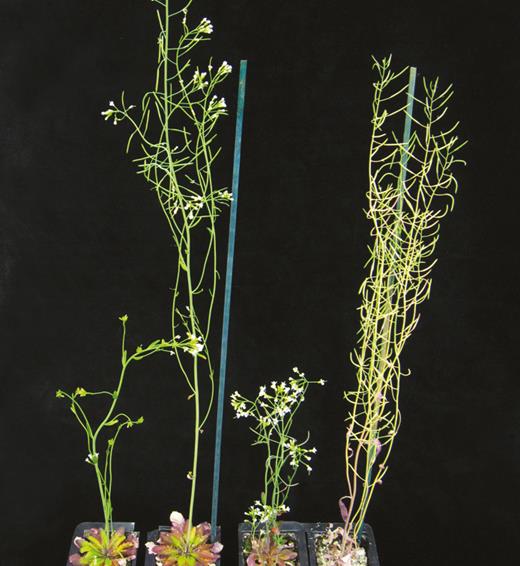
In a global warming simulation of 4°C between 2013 and 2080, Footitt et al. find that life cycles of the Arabidopsis thaliana ecotypes Cape Verdi Island (Cvi) (winter annual) and Burren (Bur) (summer annual) responded differently. In ‘2080’, flowering time was 10 days earlier for each 1°C increase in temperature in Cvi and by 5 days in Bur in a winter life cycle. In ‘2080’, seedling emergence increased in Cvi and decreased in Bur while a summer life cycle negatively impacted on Bur. Cvi was more adaptable to projected temperatures. This indicates a changing dynamic between winter and summer annual angiosperm types.
Authors: Steven Footitt, Angela Hambidge, and William Finch-Savage
Compounding effects of fragmentation in Pistia stratiotes
Annals of Botany 127: 123–133, 2021
doi: 10.1093/aob/mcaa150
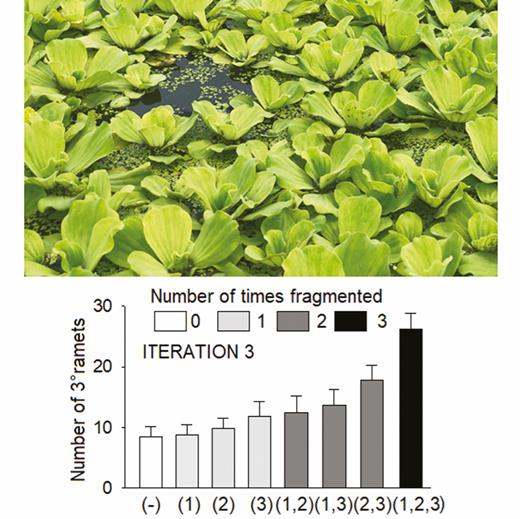
Fragmentation of previously connected clones frequently happens in some clonal plants. However, no studies have tested the longer-term effects of fragmentation on clonal performance across multiple vegetative generations. Adomako et al. study the fragmentation effects on the floating plant Pistia stratiotes (Araceae) across three vegetative generations. Both the positive and negative effects of fragmentation on clonal performance compound and persist over time and can be stronger when resource levels are lower. These findings demonstrate how fragmentation of clonal plant populations can affect fitness across generations.
Authors: Michael Opoku Adomako, Peter Alpert, Dao-Lin Du, and Fei-Hai Yu
CAM-like photosynthesis in Isoëtes is a response to low carbon availability
Annals of Botany 127: 135–141, 2021
doi: 10.1093/aob/mcaa153
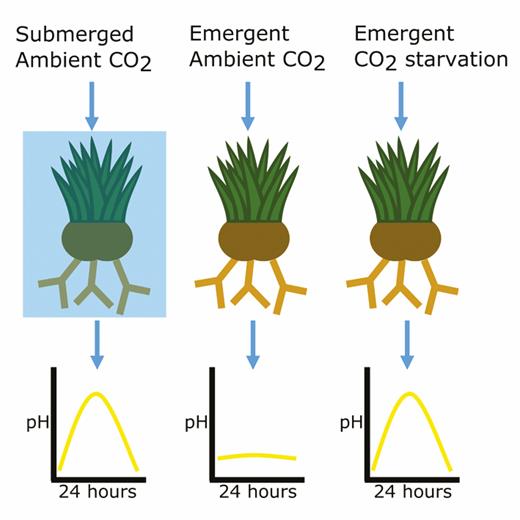
Since the initial documentation of CAM-like photosynthesis in the lycopod Isoëtes (Isoëtaceae), aquatic carbon starvation has been suggested as the main selection pressure leading to the evolution of this behaviour in the genus. However, this hypothesis has remained largely correlative and untested. Suissa and Green provide evidence from CO2 starvation experiments to demonstrate that CAM-like nocturnal acid accumulation in Isoëtes is a response to low daytime carbon availability. This provides direct evidence supporting the carbon-limited hypothesis on the evolution of CAM-like photosynthesis in Isoëtes.
Authors: Jacob S. Suissa and Walton A. Green
Enzymes involved in sugar metabolism and nitrogen-dependent susceptibility to Botrytis cinerea
Annals of Botany 127: 143–154, 2021
doi: 10.1093/aob/mcaa155
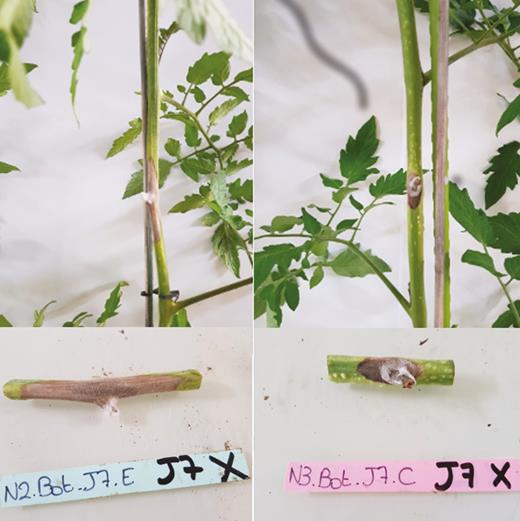
The role of plant sugars in immunity is not yet fully understood. Here, Lacrampe et al. use nitrogen supply to generate a gradient of susceptibilities of tomato (Solanum lycopersicum) stems to the pathogenic fungus Botrytis cinerea. Under conditions of sufficient nitrogen availability, leading to low susceptibility, they identify an increased expression of genes that encode enzymes of sucrose cleavage, especially sucrose synthase, and enzymes of hexoses phosphorylation. In contrast, susceptible plants show an early repression of these genes. The products of sucrose synthase activity – fructose and UDP–glucose – may be required for successful tomato defence against B. cinerea.
Authors: Nathalie Lacrampe, Félicie Lopez-Lauri, Raphaël Lugan, Sophie Colombie, Jérôme Olivares, Philippe C. Nicot, and François Lecompte
Arbuscular mycorrhizal colonization outcompetes root hairs in maize
Annals of Botany 127: 155–166, 2021
doi: 10.1093/aob/mcaa159
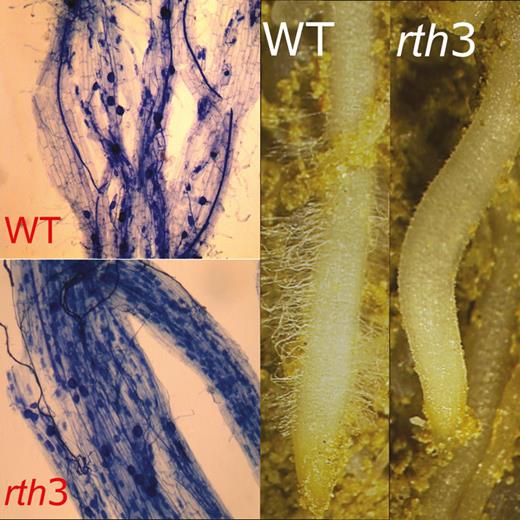
Root hair length and mycorrhization density are two alternative strategies used by most plants to increase phosphorus (P) acquisition under deficiency. Using nearly isogenic maize lines, the B73 wild type and the rth3 root hairless mutant, Ma et al. quantify the effect of root hairs and arbuscular mycorrhizal (AM) colonization under P-deficiency through a combined analysis of morphological, physiological, and molecular factors. The mycorrhizal dependency of maize was higher than the root hair dependency. Arbuscular mycorrhizal colonization outcompetes root hairs in maize under low phosphorus availability.
Authors: Xiaomin Ma, Xuelian Li, and Uwe Ludewig



